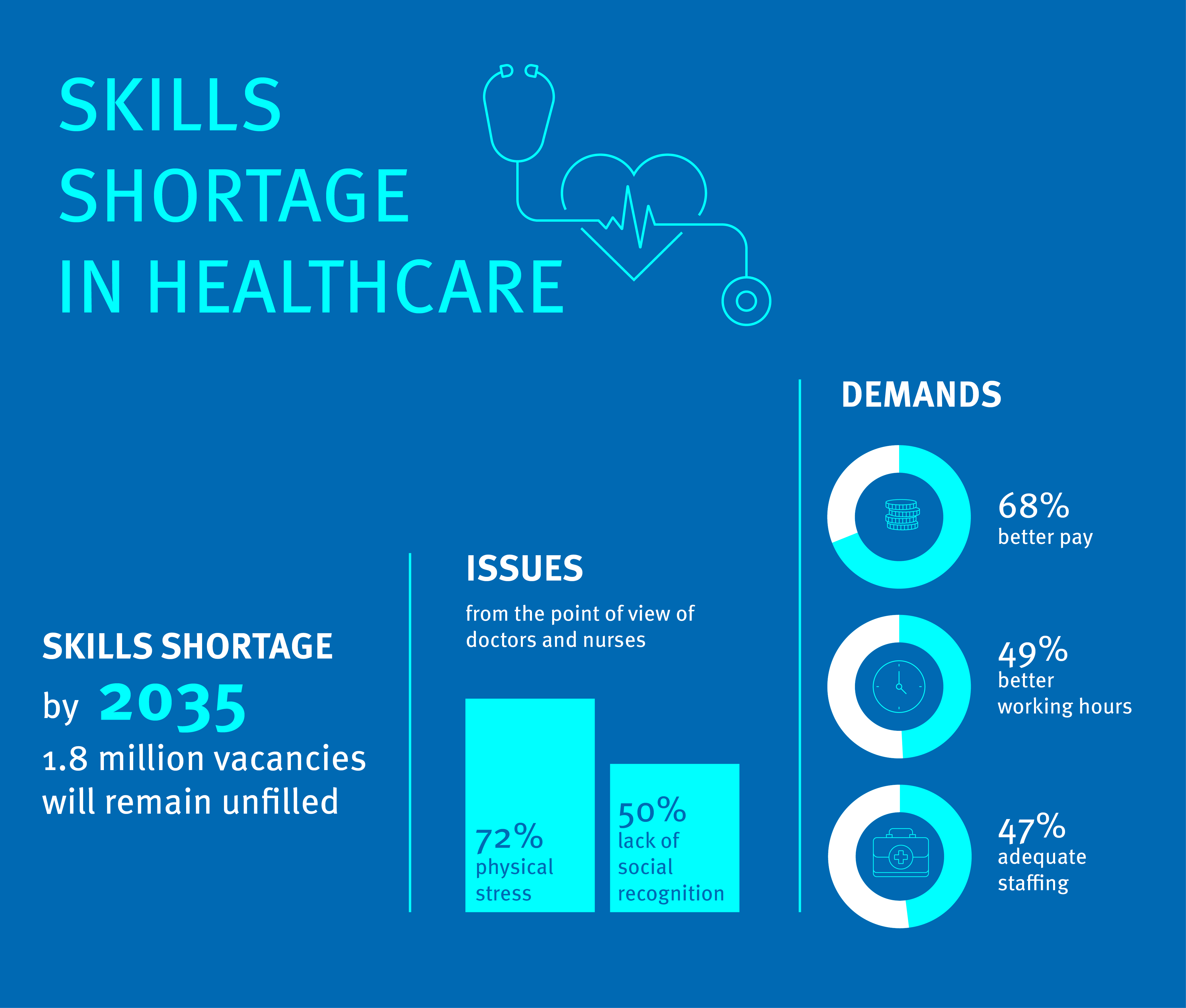Virtual Reality | A game changer for hospital planning
Digitization is accelerating medical progress while an investment backlog in healthcare real estate is having a detrimental impact on the sector: The healthcare system in Germany is in urgent need of modernization. When it comes to planning hospitals in the interests of users, virtual reality puts a solution within reach.
Hospital planning with VR glasses
A senior physician walks through the operating theater. An orderly carefully checks whether the wet room is large enough. And an intensive care nurse considers the best location for the blood gas analyzer. It’s not just planners and architects who are using VR technology to get a realistic picture of what a new hospital will look like. They are also involving the future hospital staff. VR glasses allow users to interact in the virtual environment, provide feedback on the current status of planning, thereby supporting a more precise and streamlined planning process. After all, who better to define future requirements than the users themselves?
Process optimization is particularly important in the healthcare sector to ensure continued delivery of medical care in the future. This starts with the construction of a hospital, because without the right rooms with the right equipment, the building cannot fulfil its function. The specialists’ know-how helps ensure that all the necessary resources are available, allowing them to provide efficient care to their patients.
Use virtual reality to engage users and increase satisfaction
Involving users in the planning process has further benefits: As well as higher salaries, more than 50 percent of healthcare professionals would like greater recognition for their work, both from the general public and in the workplace itself. One way to address this need is by using VR to integrate skilled workers better – and above all earlier – into decision-making processes, and allowing them to have their say.
Test run with VR glasses
The market for virtual reality solutions is growing. One specific solution already tested by Drees & Sommer is the Inspacion simulation tool. This allows users to take a virtual walk through planned spaces and contribute their feedback. This avoids the higher construction and operating costs that can result from planning errors. This approach has been used for various healthcare projects, including the Klinikum Idar-Oberstein and the German Heart Center Berlin, with the aim of involving users in the planning.

Visualization of the Klinik Idar-Oberstein
In Idar-Oberstein, almost 80 employees – including chief and senior physicians and nursing staff – used the Inspacion tool to take part in user surveys facilitated by Drees & Sommer. The findings – including those relating to room sizes, processes and specific user requirements – were immediately incorporated into current planning.
At the German Heart Center Berlin, 82 percent of respondents to a follow-up survey stated that their personal satisfaction had increased as a result of being able to actively participate in the planning process. The majority of respondents are now motivated to participate in further planning phases.

Visualization of the German Heart Center Berlin
The bottom line: Less risk and greater satisfaction thanks to VR
Virtual reality simplifies exchange between the individual stakeholders during the planning phase. Planners and users can communicate quickly and directly with each other and work together on concepts and solutions. As well as having a positive effect on the planning of hospitals and health centers, this also increases the satisfaction of the professionals involved.
This results both in early coordination of work processes and optimization of construction. And a working environment that is perfectly tailored to the users not only makes future operations more efficient but also motivates employees to get the most out of a new environment they have helped to design. This increases the attractiveness of the workplace as a whole, which in turn attracts new skilled workers.
The skills shortage is an issue of great concern, particularly in the care and healthcare sector. The shortfall is already around seven percent, and it is expected to rise to 35 percent by 2035, as this infographic shows. In addition to better pay, employees are demanding better working hours and adequate staffing. More than 72 percent of respondents consider physical strain to be an issue, and 50 percent complain about the lack of social recognition for what they do.

Source: PwC – Skills shortage in the German healthcare system in 2022

